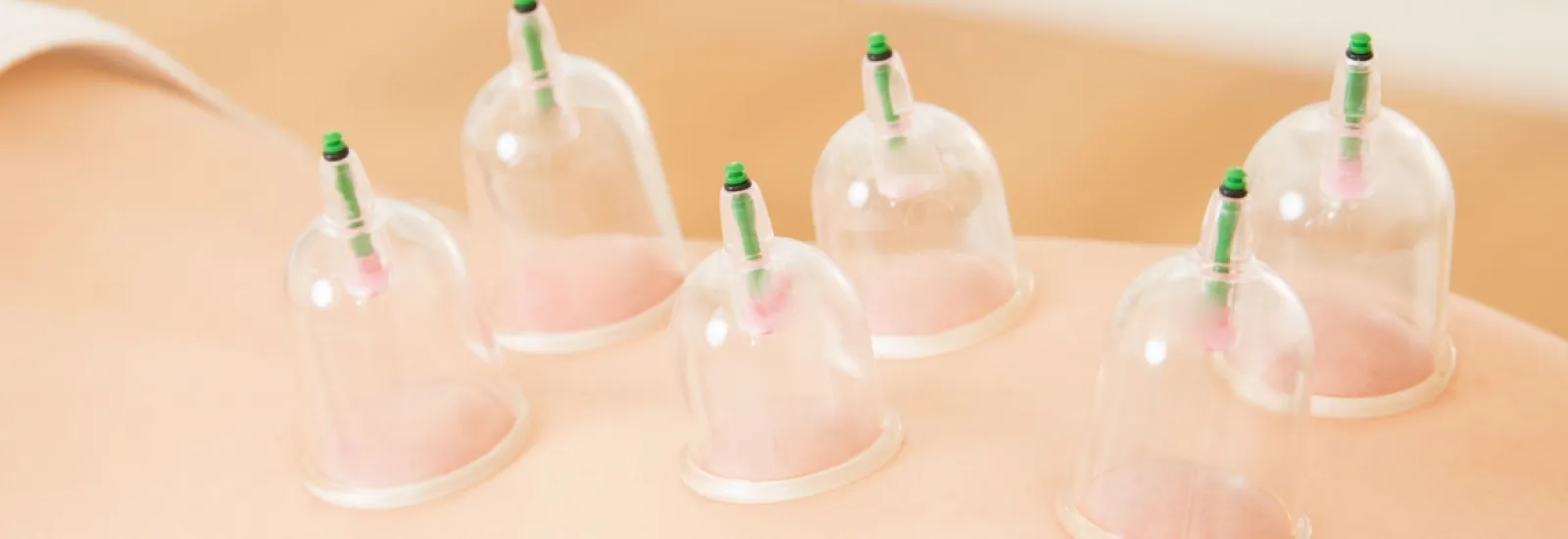
Cupping Therapy: What Is It and How Does it Work?
The 2020 Summer
Olympics were postponed due to a global pandemic, but many still have the image
of the red and purple circles on Michael
Phelps and other athletes' bodies at the 2016 Rio Olympics seared into
their memories.
Those red and
purple circles were the result of an ancient Chinese therapy now referred to as
"cupping" or "cupping therapy". From athletes like Michael
Phelps to celebrities like Gwyneth Paltrow, cupping therapy has received a lot
of attention in recent years.
You don't have
to be an athlete or celebrity to try cupping therapy and experience its
effects. Here is a closer look at cupping therapy, from how cupping works to
its benefits to whether it could be right for you.
What is cupping therapy?
Cupping therapy is a form of ancient Chinese medicine that has been used for thousands of years to treat pain, muscle stiffness, and other ailments. Today, cupping therapy is used as both a massage technique and muscle recovery tool.
How is cupping done?
In dry cupping,
a glass cup is placed on the skin, over a specific muscle or region of the
body. The air inside the glass cup becomes pressurized and suctions the skin
into the glass. Once suction is created, cups can either be pulled across the
skin by a practitioner, typically with the help of massage oil, or remain in
the same spot. Cups are affixed to the skin for approximately ten minutes
before being removed.
What does cupping do?
Your blood
contains oxygen and other minerals that are necessary for every muscle and
organ in your body to function. Blood is regularly cycled through your body in
a process called circulation. If your body has an injury, blood flow promotes
healing. Cupping is a targeted form of circulation, directing blood
to a specific region in the body to promote circulation, increased oxygenation and
healing.
Cupping Therapy Benefits
Practitioners
and recipients of this form of therapy report a wide variety of cupping
benefits.
- Noninvasive, natural therapy - Cupping is a
form of treatment that does not require ingesting medication or inserting
anything into the body.
- Pain relief - People who receive cupping
therapy report the increased blood flow to a targeted site provides pain
relief.
- Improved muscle recovery - Athletes who use
cupping therapy claim the heightened circulation to specific muscles promotes
recovery.
Other
reported benefits of cupping include decreased acne from
removing toxins from the skin, heightened metabolism, relief from constipation
and improved digestion.
Cupping Therapy is used to treat:
- Fibromyalgia
- Poor Circulation
- Sciatica
- TMJ Disfunction
- Parkinson's Disease
- Chronic Pain
- Arthritis
- Poorly Nourished Skin and Muscle Tissue
- Headaches
- Stagnant Lymph & Edema
- Pre- and Post- Operative Conditions
- Athletic Stress & Injury
- Scars & Adhesions
- Muscular Aches
Cupping Therapy Side Effects
As with all
treatments, there are potential side effects. Known side effects and risks of
cupping therapy are low. Some reported side effects of cupping include mild
bruising at the site, which disappears within ten days, and slight discomfort
during the procedure. If you have any concerns about possible side effects, please consult your health care provider.
Does cupping work?
Cupping is an
alternative form of medicine, like acupuncture or massage. As in all forms of
medicine and treatment, people respond differently. Some people experience the
positive effects of cupping while others do not see a difference. Your certified cupping therapist will work with you to determine the best form of treatment for your needs.
Who can benefit from cupping therapy?
Athletes and
celebrities have promoted the health impacts of cupping therapy, but almost
anyone can enjoy them. The majority of healthy people can benefit from cupping
therapy. Extra caution should be taken with seniors, children, people on blood
thinners, and pregnant women. Your massage therapist will
talk with you to decide if cupping therapy is an appropriate form of treatment.
Where can I find cupping near me?
Before you undergo any form of treatment, you should make sure your practitioner has specific training in that technique. Ask your practitioner what kind of instruction they have received and if they are certified. It is also important to consult your primary care provider before incorporating alternative medicine or treatment into your routine.

